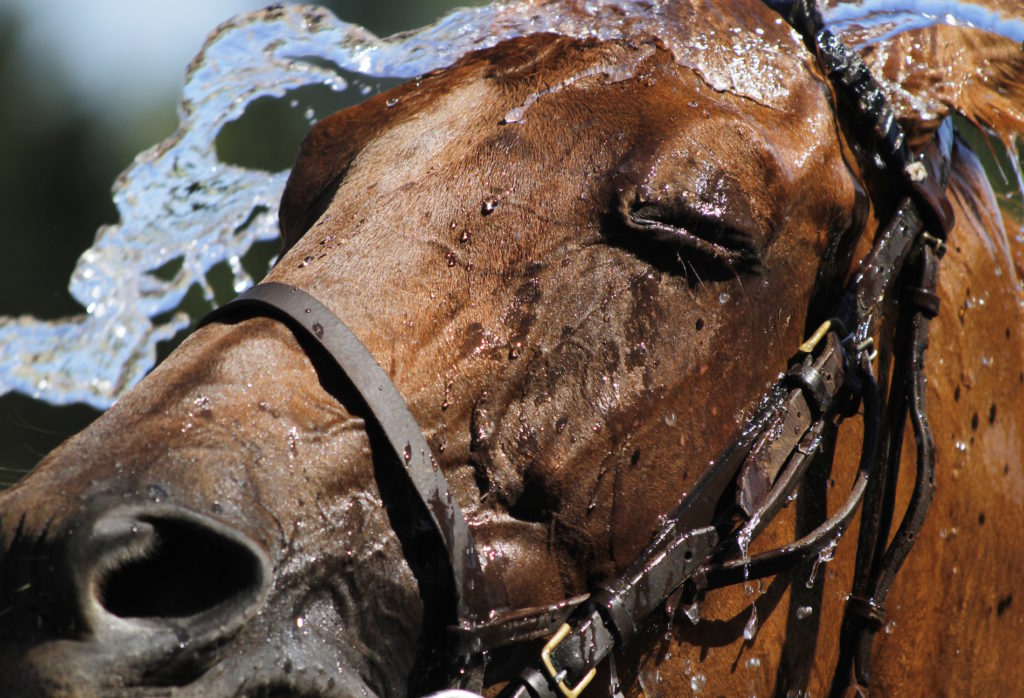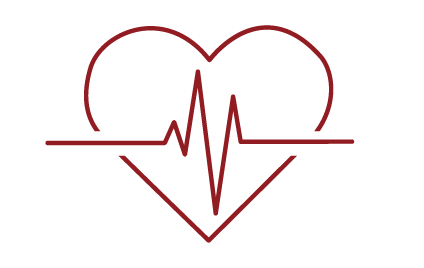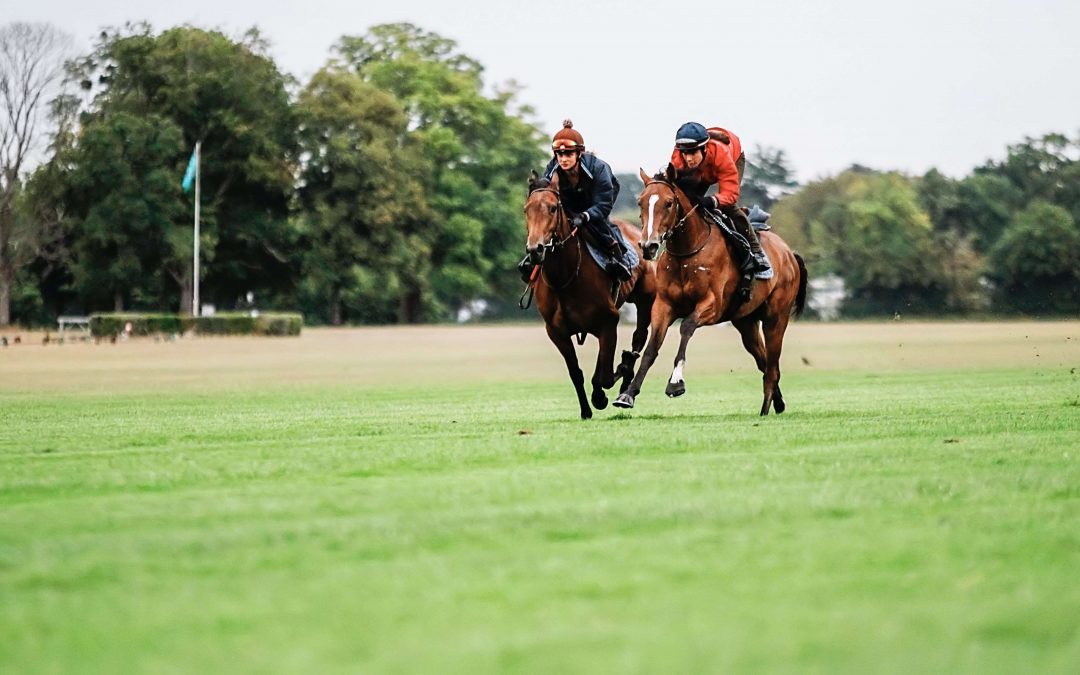Monitoring the impact of a race on your horses is an important step when ensuring they recovered well.
Race day is the day for which all racehorses are trained: training is only intended to optimise the horse’s performance on race day. Conducting pre-race training is one thing, but the post-race period should not be underestimated. The horse’s recovery depends on several metabolic elements to be taken into account, but also on external parameters which shouldn’t be neglected. The racehorse is a high level athlete who requires special attention after the effort, which is why we give you the keys to understanding its metabolism during the race to better apprehend the return from the race and the return to training.
Simple elements can give you an indication of your horse’s shape on race day: his attitude, his awareness, his energy level, his stress or anxiety level. How well did the horse cope with transport (restlessness, sweating, calls) ? What is his attitude at the presentation round ?
Now let’s take a look at what happens in a racehorse’s body from the moment he jumps out of the stalls.
1. Energy production: aerobic and anaerobic metabolisms in racehorses
When leaving the stalls, the horse’s heart rate increases very quickly, the blood supply to the lungs is intensified to maintain a sufficient supply of oxygen.
➡️ To understand how the horse manages to maintain the effort, we advise you to read this article about some concepts of aerobic and anaerobic.
From the very beginning of an effort, as soon as the horse is warmed up, three energy-creating mechanisms are put in place. The first, the aerobic mechanism, uses oxygen to break down fat and create energy. The second, the alactic anaerobic mechanism, uses sugars present in the muscles to generate energy, which will generate waste products that are eliminated by oxygen. In the third, lactic anaerobic, supply of oxygen is no longer sufficient to eliminate the waste produced by the anaerobic mechanism: lactic acids accumulate in the muscles which become painful and the effort cannot be sustained any longer.
The anaerobic threshold is the horse’s fatigue threshold, i.e. the point at which aerobic activity is no longer sufficient (heart and respiratory rates are at their maximum and the oxygen supply does not allow for the elimination of all the waste produced by alactic anaerobic conditions). The goal is to know at what point the horse crosses the red line, i.e. the speed at which it can no longer eliminate lactic acid thanks to its oxygen supply. This threshold is also called the fatigue threshold because the muscle starts to concentrate lactic acid and uses a lot of glycogen, so the horse cannot continue its effort for long.
During the race, the horse reaches its maximum heart rate. Therefore, without training it would be very difficult for him to finish the race without quickly feeling muscular fatigue. Training therefore optimises the horse’s energy creation and consumption process. Let’s assume that our runner is ready to run, so he will not have any difficulty to hold the race from a cardiac or muscular point of view: what is at stake next is his level of fitness compared to other horses. Discover in video how to know if your horse is ready to run thanks to Equimetre’s data.
2. Thermoregulation in horses
Several mechanisms allow the horse to thermoregulate itself, but evaporation remains the most important. Evaporation means on the one hand sweating, and on the other hand exhalation. In both cases the horse evacuates the heat induced by the effort and stabilises its temperature. It is very important to acclimatise the horse to a change of environment (heat, humidity), in order to allow the thermoregulation systems to adapt. For example, if you already know that the race is going to take place somewhere where there is humidity in the air while you are training your horse in a rather dry area, planning to arrive at least a day beforehand is a good strategy. The body will not be strained – or will be less strained – by the effort than if it had arrived a few hours earlier.

3. What are good post-race practices to adopt for your horses?
What are the differences between a race and an intense training?
Thinking about the conditions of a target race in order to adapt training conditions can make sense. In a training effort test, the horse’s body will approximate the race conditions, but this is not entirely accurate for several reasons.
Firstly, as mentioned earlier, the weather conditions between the training ground and the racetrack may differ completely (especially when the horse is going to race abroad). For this reason, his abilities may change and he may not stick to his usual times.
Secondly, the horse is a sensitive being for whom the environment is very important, especially in thoroughbreds. The horse will therefore be attentive to the public, the stands, the change of track, the number of people around him, the new horses around him, well, to the place he doesn’t know.
A horse who sweats abundantly in the starting stall and with an already high heart rate will not perform at its best because part of its energy will already have been consumed by stress. This horse will have a lower performance.
However, the opposite may be true. Some horses will be stimulated by competition, by this new environment, and especially by their competitors. These horses will be more likely to stick to their usual performance, or even outperform thanks to the emulation of the race.
What are the good practices?
The benefits of active recovery in the minutes following the race can only be praised. This will eliminate the toxins contained in the muscle (lactic acid is one of them), the heart rate will gradually decrease and aches and pains will be avoided. A small post-race trotting followed by a moment of walking at a walking pace allows the horse to reactivate its blood circulation. In all cases, putting the horse back in the box after a competition, whether it is a race or eventing, is not advisable.
HARNESS
For the trotters, the day after the race it is wise to plan a trotting from 45 to 60mn at a speed lower or equal to 21km/h. This will allow the muscles to “cleanse” themselves of the toxins remaining from the day before.
The racing frequency of trotters is quite different from the frequency for thoroughbreds: they run on average once a week. Therefore, the recovery is not done in the same way. In the case of trotters, trainers give priority to interval training, including during the week: over the course of a week, the horse will alternate between easy and more intense exercises in order to prepare himself as well as possible for the next race.


FLAT RACING
The day after the race, and in the week following the race, no huge training will be planned. The little post-race canter is essential to detoxify the muscles. As the races of the thoroughbreds are generally more spaced out, heavy work resumes a good week after a race to gradually reach a greater workload until regaining the level of fitness expected before the race.
Actually, there is not one single parameter to observe after the races. You have to keep looking at all the parameters to see the evolution of the horse over time. However, we can pay special attention to the heart rate, because a horse that has pain will have a very high heart rate even while warming up. This will make it possible to detect if he was injured the day before during the race, or during transport.
It should also be remembered that the horse is a routine animal, so it is important that he returns to its usual environment as soon as possible after the race. Getting back to his box, his training track and his companions contributes to his mental, and therefore to his physical well-being.
4. How to objectivise the impact of a race?


Gradual increase of the workload
In order to resume training and regain his fitness level, the horse’s workload must increase gradually and each training must be acquired in order to move up to the next level in the best conditions. Each horse can cope with this increased workload in its own way and the ideal is therefore an individualisation of the training schedule where possible. In this way the risks of over and under-training can be avoided. How can Equimetre data help to measure the gradual increase in workload ?
Recovery analysis allows the trainer to judge the assimilation of the day’s work in order to adapt the next session. To analyse the recovery, 4 zones in the review of the evolution of the heart rate during work can be useful: you will find them in this article.
Analysis of recovery work immediately after the race
During the light work that follows the race, recovery indicators can be analysed and closely monitored to check that recovery improves from one light work to the next. If recovery is poor, does not improve, or if the heart rate shows abnormally high levels compared to pre-race levels during the warm up canter or warm-up trot, an electrocardiogram (ECG) investigation with a veterinarian may be appropriate.
Pathologies may have emerged at the end of the race, and signs of overtraining may be manifested by arrhythmias (heart rhythm disturbances) visible on an ECG. Equimetre records all the electrocardiograms of the trainings which can be extracted by a veterinarian. jrjrjrjrjrjjrjrjrjrjjrjrjrjrjjrjrjrjrjrjrj

Getting back to pre-race fitness
Depending on the race, training is aimed at getting back into shape, and reach fitness level suitable for competition. To be sure that a horse is ready to race, it is a good idea to use the comparison tool with a reference training that the trainer knows has led to a good performance in racing. If this training is reproducible (time, speed, ground, track), the interesting points of comparison concern the recovery parameters. In order to find out whether the horse has returned to its ideal fitness, you can look at its heart rate level after the effort, and its heart rate at 15 minutes. The maximum heart rate (which varies only slightly for the same horse and does not depend on its fitness) should not have changed so much, but you can expect heart rates after the effort and at 15 minutes to be as low as possible, and at least as low as those of the reference training.
Quantify and track your horses weight
Although rarely digitized, weight data allows the trainer and rider to identify the fitness weight of their horses more accurately, in addition to visual assessment.
Once defined, the fitness weight is the optimal weight to achieve during a period of sports performance. For example, for a horse that is returning to training, this data helps to recalibrate the schedule and ensure the effectiveness of the training. Conversely, detecting early weight loss can limit the risk of overtraining.
Finally, another interest of weighing your horse regularly is to quantify the impact of the competition on the body, and to make sure that it recovers well.
It is recommended to weigh the horse before, just after, and after the recovery phase of a competition. The horse should return to its normal weight shortly after the event. In the horse athlete, maximum exercise induces severe dehydration, which can cause the athlete to lose up to 20 kg of weight. The recovery time (usually between 3 and 9 days) of the weight after a competition is an important element of the medical-sports follow-up.
Key words: racehorse fitness, optimisation of performance, racehorse heart rate, energy-creating mechanisms, aerobic and anaerobic mechanism, racehorse fatigue, intense training, standardbreds, galopers, objectivize the impact of a race, state of fitness before the race, racehorse workload, racehorse recovery, racehorse state of fitness


